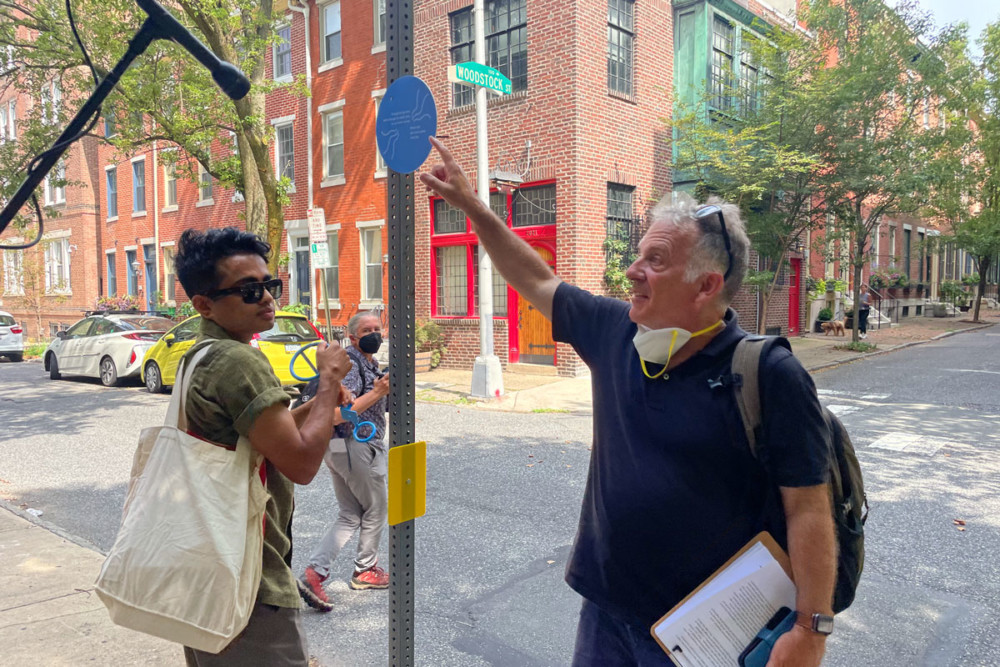
Watershed Moment at the Academy of Natural Sciences encourages participants to consider how water moves throughout urban landscape
The new art exhibit connects people to their watershed with over 40 experiences.
What is a watershed?
The term often mystifies us. “I thought I knew what a watershed was until I realized when asked point blank to explain it, and I was unable to put words to it,” said artist Whit MacLaughlin.
MacLaughlin, along with Pete Angevine and artist Laia, was on the creative team behind How to Get to The River, one of the experiences that create the Academy of Natural Sciences’ new exhibit, Watershed Moment. The trio worked with scientists from the Academy’s Patrick Center for Environmental Research to develop the experience.
“People are fairly alienated from how water is moving through the city, and what the waterways look and feel like,” said Laia.

Watershed Moment attempts to change that, with four art installations. Along with How to Get to the River Walk, Attunement is an outdoor sculpture in front of the Academy. Inside the Watershed is a sound installation situated along the Schuylkill River Trail, and The River Feeds Back is an immersive sound installation on view in the Academy’s Dietrich Gallery.
The project is the first public art commissioned by the Academy. It is the signature event of the yearlong Water Year 2022, designed to connect people to their local waterways and inspire them to take care of them. It was commissioned by the Pew Center for Arts & Heritage.
According to Scott Cooper, President and CEO of the Academy of Natural Sciences, there are a few reasons why this project is so important. For one, the urgency of water issues. “You only have to look to the west coast to see what’s coming,” said Cooper.
Immersing in ‘How to Get to the River’
How to Get to the River incorporates over 40 artistic expressions distributed over a 1.5-mile walk from the Academy to the Schuylkill River. It examines the Schuylkill River ‘micro-shed’, a section of the Delaware River Watershed, through sidewalk art, murals, musical interludes, immersive sound experiences, haikus, maps, and more.

The Academy hosted a preview of the exhibit before it was open to the public (and was still in the process of completion, due to extreme heat delays. Ironically, an exhibit showing examples of climate change had project disruptions due to climate change.)

As attendees followed yellow blazes to show the exhibit route, the creative team pointed out the installations that showed where water flows through the cityscape, read poems and described interactions of water.

The exhibit uses existing infrastructure and had to get permission from residents or building owners to place temporary placards. In Coxe Park, two maps behind Ben Franklin show original Philadelphia streams versus present sewer systems. Text in front of the benches encourages park visitors to contemplate that juxtaposition post-colonization.


Laia hopes exhibit attendees will become curious about watersheds in Philadelphia or where they are living. “Curiosity, attention and presence are what I hope people walk away with,” said Laia.
And that curiosity is a common goal for project stakeholders.
“This experimental brilliant project will appeal to some, not at all to others and perplex others. But it will get everybody thinking,” said Cooper.
How to Get to the River Is free with Academy admissions and $7 for a standalone ticket. Visit Watershed Moment for more information. The exhibit runs through October 30, 2022.








